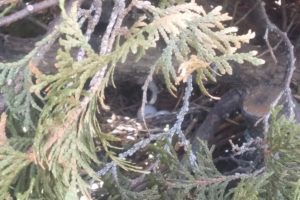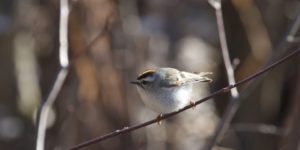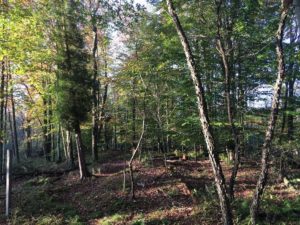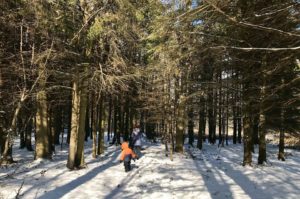by Jessica Johnsrud, Woodland Dunes Education Coordinator
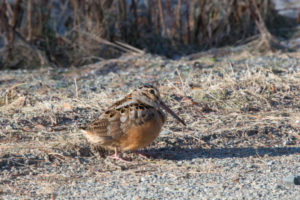 This time of year, I look forward to a special performance that, for me, signifies spring has arrived. The show starts most evenings around twilight. The feathered performer sings and shows off his acrobatic skills for all to see. I am talking about the amazing sky dance presented by the American Woodcock.
This time of year, I look forward to a special performance that, for me, signifies spring has arrived. The show starts most evenings around twilight. The feathered performer sings and shows off his acrobatic skills for all to see. I am talking about the amazing sky dance presented by the American Woodcock.
Woodcocks are chunky shorebirds with short legs and an overall mottled brown body. Their bellies are colored cinnamon and they have thick, horizontal black bars on the top and back of the head. Their eyes are located on the sides of the skull and their beak is long and straight. Woodcocks live in young, dense forests and are seen on the ground, probing the soil for invertebrates such as worms, snails and beetles. Their mottled coloring allows them to blend in with the leaves and other debris on the forest floor. Woodcocks have many amusing nicknames including: timberdoodle, bogsucker, night partridge and mudbat.
I recently watched the timberdoodle’s sky dance on a calm evening in early April. The males perform an elaborate display in the spring in an effort to attract as many females as possible. He finds a clearing, like an old field or edge of the forest, and claims this as his singing ground. Males defend their singing ground and will drive off other males that get too close. The territories are small, about a quarter acre in size, so you can observe more than one male woodcock in an area.
Once the stage has been selected, he will begin his courtship display around twilight. He starts on the ground, repeatedly making a loud, nasal buzzy sound known as a peent. After a minute or so of peenting, he suddenly launches himself into the air, flying high into the sky. Here, he takes a short pause (perhaps for dramatic effect) and then spirals and zigzags back down to his singing ground while making “kissing” sounds. He will continue this display until it’s dark and begin again in the dawn twilight.
Interested females enter the clearing and males bob, bow and strut to really show their stuff. The females are choosy, and will observe several males before selecting one to mate with. The females nest within 150 yards of the breeding ground and the male plays no role in caring for the young. She lays four eggs in a small depression on the ground and incubation takes about 20 days. When the chicks hatch, they are precocial, meaning their eyes are open and they have downy feathers. They leave the nest together within a few hours of hatching and the young will be completely independent in about one month.
You can observe woodcocks displaying as early as mid-March and typically into May, though some hopeful males will continue into early June. If you decide to catch a show, be sure to be quiet and give the male plenty of space, so you don’t interfere with his performance.

